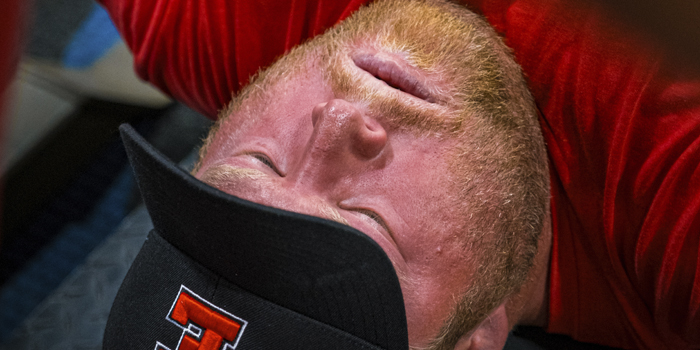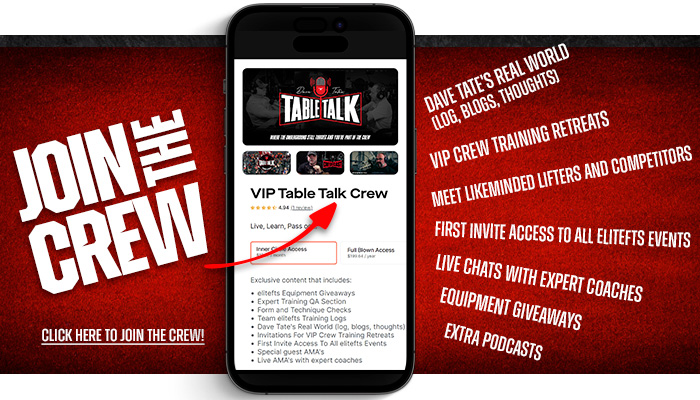
The more road you have under your belt, the better equipped and skilled you become at identifying patterns, foreseeing trends, and predicting the cyclical nature of things. In large part, this is based on your lived experience. As you increase the number of times that you have "been there and done that" with a given situation, each additional trek down a more and more familiar path assists in developing your familiarity with foreseeable occurrences and predictions of emerging patterns.
Observe and Learn
I recall working with white-albino lab rats in graduate school and observing the patterns of those housed socially versus those housed in individual surroundings. When placed in an unfamiliar maze and individually released to explore, rats (both social and isolated) have similar explorational traits. Although there were nuanced differences due to housed-environmental conditions, many of the behaviors were similar based on instinctual drives, the nature of that given animal, and the number of times they explored a familiar or new maze. The more rats we observed, the more equipped we, the observers, were able to identify and predict the emergence of likely exploratory patterns.
Humans, like their furry red-eyed, white-haired rat friends, also engage in foreseeable behavioral patterns. Patterns that those with a little more lived experience can often predict in others. Predict as the observed person begins to metaphorically explore a particular "maze in their life," a life maze that the observer already has experience with, exposure to, and knowledge and observations of.
In regards to the world of strength and power, some new to competitive powerlifting have predictable patterns of behavior when viewed by observers who have quite a few years or decades of experience under their lifting belt.
Eating into the Next Weight Class VS BUILDING into the Next Weight Class
A very familiar pattern observed in many new lifters is an abandonment of taking that slow and steady, tried and true approach to a continual increase of body weight through skeletal muscle gain. This approach is often abandoned once the progress in strength and power muscular advancements at the beginning of this journey begins to wane. As one begins their journey in the world of weights and the gym, improvements in these areas are rapid and fairly easy to achieve. As time passes, earning increases in muscle, power, and strength becomes slower and harder due to the diminishing effectiveness of the accustomed training efforts.
Subsequently, we often observe that the slow and steady approach is being replaced with a rushed and hurried approach coupled with the "see-food" diet (see food, eat food). This is a pattern we see that is, more often than not, accompanied by the desire to move into the next heavier weight class. Said another way, the inexperienced lifter is not so much building oneself but more so eating oneself into the next class. The short-sighted view is that a bigger weight class must equal a bigger total.
Recent: Strength, Power, and AI
One of the most influential powerlifters and coaches, and someone I am proud to have called my mentor, coach, and friend, is the late powerlifting legend Ernie Frantz. Ernie would state that as a strength athlete and as a powerlifter, you should always be in tremendous muscular shape and condition. So much so that a lifter should appear as if they were able to compete in a physique or power event given 16 or so weeks of notice. In other words, always train in a state where you are very strong, powerful, and muscular with a clearly visible abdominal plate of powerful and functional wall of abdominal muscles.
Do not get it twisted; we are not remotely talking about being "shredded" or ultra vascular, as a powerlifter does not need to be sub-10-12 percent body fat. Nor are we remotely suggesting to do this, as powerlifting is powerlifting and bodybuilding is bodybuilding. What we are absolutely saying is to be in the type of athletic condition one achieves (powerful, strong, explosive, and muscular) through the foundational powerlifting pillars of hard work, perfect technique, consistency, proper nutrition, proper hydration, and sufficient recovery.
Powerlifters are athletes, and as newer lifters hit their first roadblocks in regards to increased strength and power, the low-hanging fruit approach is to eat more, weigh more, and hope to lift more. This is not the athletic path. It is not the path to success in the sport long-term, and ultimately, it will not serve them best for the duration. The point is, train to be packed into your skin with a physique built through very heavy weight training, quality nutrition, hydration, rest, recovery, and the other essentials.
Learn and Pass On Knowledge
Ernie Frantz would speak of building yourself into the next weight class. For example, being a full, muscular, and extremely powerful 198-pound class lifter that slowly builds their muscle, tendon, ligament, and body mass, strength, and power into a solid 220-pound class. This verse being a 198-pounder who over-eats themself up to a soft and bloated 220s and who lacks both the muscle and power to be the best powerlifting version of themselves in that weight class. This approach has always been and will always continue to be short-sighted and a road to regret. It is a pattern, a trap, the Trojan Horse that those new to the sport powerlifters fall for and succumb to.
While making the 90-minute drive to do my heavy big three training at Frantz Gym on the weekends, I would train my other days at a gym located a few minutes from where I lived and worked during the weekdays. When training at Frantz Gym, you had exposure to lifters like legendary lifters Bill Nichols, Ernie himself, Stephnie Van De Weghe, a then-teenaged Jose Garcia, and a trove of some of the best powerlifters of that time, and some of all time. Besides being supremely powerful and amazingly gracious with their knowledge (LIVE, LEARN, and PASS ON), they all were in great condition, and they all built themselves versus stuffing their face with drive-through food to cross over into the next heavier weight class.
Hard Work Will Pay Off
It is better to need baby powder (pre-suit slickers) to help you slide your muscle-packed powerlifting self into your squat suit than merely to be ten pounds of bloat and water-retentive fluff stuffed into a five-pound casing. Again, this is not suggesting to walk around "stage ready," but what is 100 percent being suggested is not doing mouth reps with Dunkin Donuts to reach the next weight class. Consume the requisite calories for the workload and make those calories count.
My question to those new lifters on the verge of making this very newbie and very predictable mistake is this: "Why the rush to get into the bigger class? Powerlifting is a journey, not a race. It is a lifelong trek, not a single destination. For them, the rush is often based on the fact that they have never hit a plateau or stalled out before. The reality is that they are neither stalled nor plateaued; they are just running smack into reality. That reality is that "gains" come easy at first, then you hit a certain point, and this is when you have to strap and buckle things down and work your tail off.
Hard work pays off, and if championships or competition success were created out of a paper bag from a drive-through, well, then anyone with enough change in their pocket to super-size it would be the next greatest thing.
Beware of Sharks
Additionally, the grass is not always greener in the other weight class when it comes to powerlifting. Beware, and as a warning to the newer powerlifter in a rush to move up a class, as lurking in murky black waters of the next weight class, there might just be a shark. A powerlifting great white shark looking to feast on the soft, doughy, overfed, and under-built newbies.
Case in point: Sometime in the mid-1990s, one of the few powerlifters at my weekday gym was getting ready for a meet and was knee-deep in their drive-through feeding bag training plan. I recall watching him as he had his pre-workout bag and post-workout bags of super-sized calories. I simply asked, "Why?" His answer was that he would be more powerful at a heavier weight and in the next weight class. Well, there is some truth behind that theory. A bigger truck tire can manage a slightly heavier load, but that said, start by building a bigger engine, training to build a more powerful transmission, and developing through the weights that larger payload area. Build a bigger, more powerful, and complete truck, part by part, versus merely oversizing the tires alone.
It Is Not Always Better In the Weight Class Up!
The conclusion to that story was that the lifter was absolutely successful in eating his way to his heavier weight class. He even lifted a little more weight. That said, pound per pound, he was actually less powerful, and he also succeeded in having his head handed to him on a silver platter at the meet. As forewarned, those murky black waters of that new weight class did contain a shark and it was the greatest, most ravenous great white shark of them all. He ate himself right into the massive jaws of Ed Coan's weight class. The weight class that Ed built himself into. Ed (The GOAT) Coan, who, by the way, trained for the now famed 1985 Hawaiian Record Breakers meet (the Woodstock of powerlifting meets) with none other than the legendary Ernie Frantz at Frantz Gym.
My point is this: if you are training hard, I mean truly putting in the work (not that do a set, scroll on the phone for ten minutes, do a set, set up your phone camera on a machine, do a set, post from your phone your lift, nonsense) and you are coupling that work with discipline, consistency, a half-way decent training method, size, weight, muscle, and power will come with time. So will the bigger weight class if that is a goal.
Slow And Steady For A Reason
The bottom line is that all successful lifters with life's road under their belt know that slow and steady is the way, as there are no shortcuts. The harsh reality is there are no secrets either. Success has been and will always be built from the foundation of hard work done consistently, over a duration of time, and done with a passion and indomitable spirit. And that is the beauty of powerlifting: you will get out of it exactly what you put into it. There is no hiding from or bargaining with the realities of this great sport. Powerlifting is what it is, and you can become only as good as the work you put in. There is no rushing the process as the powerlifting is the process, and every day builds upon the prior day.
The goal should never be to simply "be" in the next heavier weight class or to add empty weight to your frame. The goal should be slowly and surely growing into that weight class through the consistent building of power and muscle, tendon and ligament strength, and to be as successful as you can in that weight class before even considering a move upward.
Contrary to how your social media algorithms may make it appear, nobody actually cares how much you weigh, nor what you post, nor what you say you could have done, or how many more pounds you feel you had in you that day. The only thing "they" care about is your total…and they only care if you are lifting against them. This is a fact, and this is regardless if you are in the 165-pound class or the 308-pound weight class.
The path to the greatest success, fewer injuries (as injuries are inevitable), and the most longevity in the sport is through a slow, methodical approach built on a foundation of quality.Remember this, powerlifting is not just about big numbers, but about big numbers sustained over a long duration of time. It is about the journey.
Conclusion
The more road you have under your belt, the better equipped and skilled you become at identifying patterns, foreseeing trends, and predicting the cyclical nature of things. Thus, the better you can help those new to the sport avoid these all too common beginner mistakes.
I wish you the best in your training and competition endeavors! Ever Onward!
Eric Maroscher is the owner of the Monster Garage Gym. Cofounded by Phil Daniels, NFL Defensive End, Monster Garage Gym is a premier powerlifting gym in the United States. Eric is the leader of the Maroscher Powerlifting Team, a two-time WPC World Powerlifting Champion, two-time APF National Powerlifting Champion, WPC North American Powerlifting Champion, and a multi-time APF Illinois State Champion.











